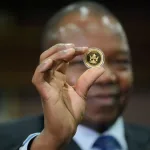The Petrodollar Agreement ends on June, 9th

eyesonmalaysia
The petrodollar agreement, established in the 1970s, refers to the practice of selling oil exclusively in U.S. dollars. This system has been a cornerstone of the global financial system, as it has helped maintain the U.S. dollar’s status as the world’s primary reserve currency1. The agreement originated from a deal between the United States and Saudi Arabia, where the U.S. provided military support to Saudi Arabia in exchange for conducting its crude oil sales in U.S. dollars1.

Shaping the international trade and finance system
The petrodollar system has had significant implications for international trade and finance. It has facilitated the investment of oil-exporting countries’ revenues back into their economies or into the U.S. economy, a process known as “petrodollar recycling”1.
BRICS countries may now seek to diversify
This system has also influenced global oil prices and the economic policies of oil-exporting nations.However, with the potential end of this agreement, there could be shifts in how oil is traded globally. Countries may seek to diversify their currency reserves and reduce reliance on the U.S. dollar, which could impact the dollar’s dominance in international markets2. Additionally, this change might affect the economic strategies of BRICS countries (Brazil, Russia, India, China, and South Africa), which are significant players in the global economy and have been exploring alternatives to the petrodollar system2.

The End of US Supremacy coming?
Overall, the petrodollar agreement has played a crucial role in shaping the modern financial landscape, and its evolution will continue to be a topic of interest for economists and policymakers worldwide.









